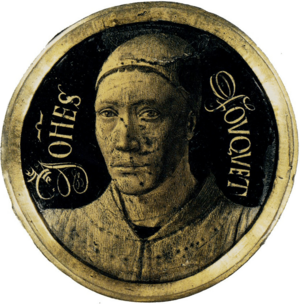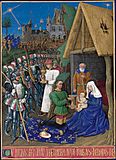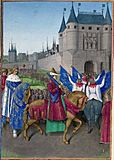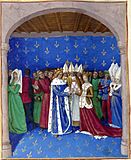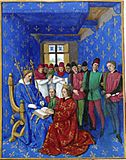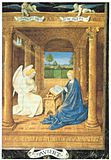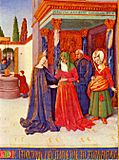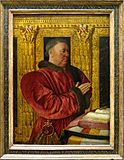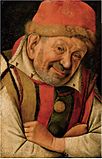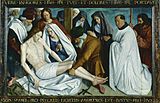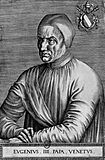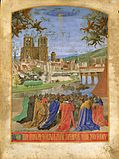Jean Fouquet facts for kids
Jean Fouquet (around 1420–1481) was a famous French painter and a master of tiny paintings called miniatures. He was great at painting on wooden panels and decorating books by hand. Many people think he invented the idea of a "portrait miniature," which is a very small portrait.
Fouquet is seen as one of the most important painters from the time between the late Gothic period and the early Renaissance. He was also the first French artist to travel to Italy. There, he saw the exciting new art style of the early Italian Renaissance firsthand.
We don't know much about Fouquet's early life or how he learned to paint. Some experts believe he might have studied with a painter called the Jouvenal Master. Between 1445 and 1447, he went to Italy. In Italy, he was influenced by artists from the 1400s like Fra Angelico. In the 1450s, he started working for the French royal court. He painted for kings Charles VII and his son, Louis XI.
A French Artist's Journey
Jean Fouquet was born in Tours, France. We don't know many details about his life. But we do know he was in Italy before 1447. During that time, he painted a portrait of Pope Eugene IV. Sadly, the original portrait is now lost, and we only have copies made later.
When Fouquet returned to France, he brought new ideas with him. He mixed the Italian style he learned with the French style. He also combined it with the detailed style of the Van Eycks. This blend helped create a new kind of French art in the 1400s. He became the founder of an important new art school.
He worked for the French royal family. His clients included King Charles VII, his treasurer Étienne Chevalier, and his chancellor Guillaume Jouvenel des Ursins. Later in his career, he became the official court painter for King Louis XI.
Fouquet's art helped the French court strengthen France's national identity. This was especially important after the long Hundred Years' War with England. For example, Fouquet once painted King Charles VII as one of the three wise men. This is one of the few portraits of the king that we have. Some believe the other two wise men in the painting are the future King Louis XI and his brother.
- Paintings of the French court
-
The burial of Étienne Chevalier
-
Marriage of Charles IV and Marie of Luxembourg
Fouquet's Famous Artworks
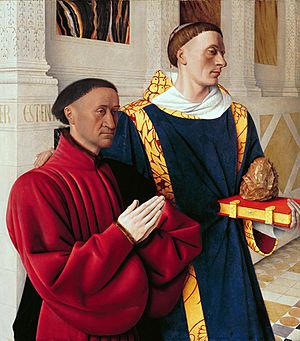
Fouquet was excellent at decorating books with tiny pictures. His skill in showing fine details and clear characters in these small works made him very important in French art. We can see how important he was when his portraits and altarpieces were brought together for an exhibition in Paris.
His self-portrait miniature might be the earliest self-portrait in Western art. This is true if the 1433 portrait by Jan van Eyck is not actually a self-portrait, as some art historians believe.
Fouquet made many more illuminated books and miniatures than large paintings. The Musée Condé in Chantilly has forty miniatures. These are from the Hours of Étienne Chevalier, painted in 1461 for Chevalier. Fouquet also decorated a copy of the Grandes Chroniques de France. We don't know who he made it for, but it was likely for King Charles VII or someone else at the royal court.
Fouquet also created eleven of the fourteen miniatures. These pictures illustrate a translation of Josephus's writings. The second part of this old book, with only one of its original thirteen miniatures, was found in 1903. Henry Yates Thompson bought it and returned it to France.
One of Fouquet's most important paintings is the Melun Diptych (around 1450). It used to be in a church in Melun. The left side of this two-panel painting shows Étienne Chevalier with his patron saint St. Stephen. This part is now in Berlin. The right side shows a pale Virgin Mary and baby Jesus. They are surrounded by red and blue angels. This part is now in Antwerp. For a long time, people have believed the Virgin Mary in this painting is a portrait of Agnès Sorel, who was King Charles VII's mistress.
The Louvre museum in Paris has some of Fouquet's oil portraits. These include portraits of Charles VII, Count Wilczek, and Guillaume Jouvenel des Ursins. The Louvre also has a portrait drawing he made with crayon.
The National Library of France has some of his illuminated parchment manuscripts. These old books tell the history of the Jewish people. They cover events from the creation of the world up to a Jewish revolt against the Romans in A.D. 66.
Gallery
-
King David and the Amalekite, as told in Antiquities of the Jews by Flavius Josephus
-
Construction of the Temple of Jerusalem
-
Portrait of the Chancellor of France, Guillaume Jouvenel des Ursins, at the Musée du Louvre, Paris
-
Portrait of the Court Jester Pietro Gonnella, at the Kunsthistorisches Museum, Vienna
-
A copy of the lost Portrait of Pope Eugene IV
-
An illustration from around 1450. It shows the cathedral of Notre-Dame with the rest of Paris in the background.
See also
 In Spanish: Jean Fouquet para niños
In Spanish: Jean Fouquet para niños
- Melun Diptych
- Book of Hours of Simon de Varie


